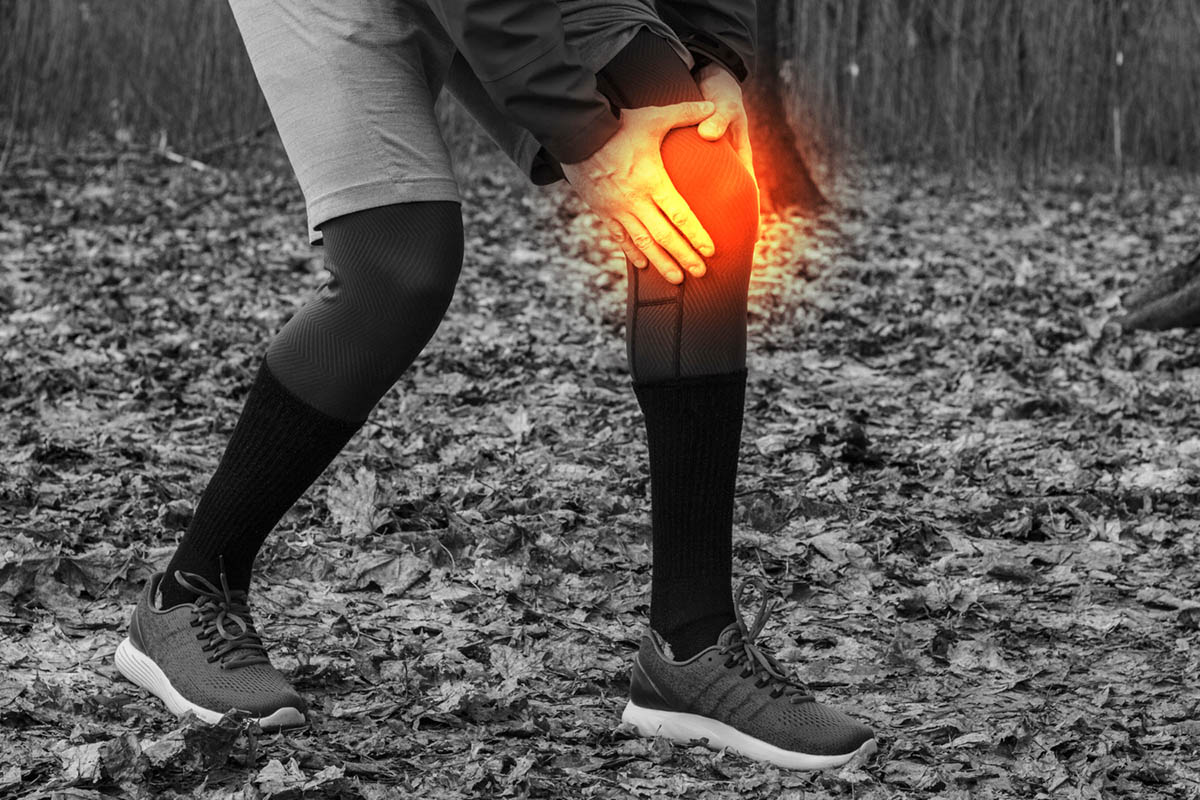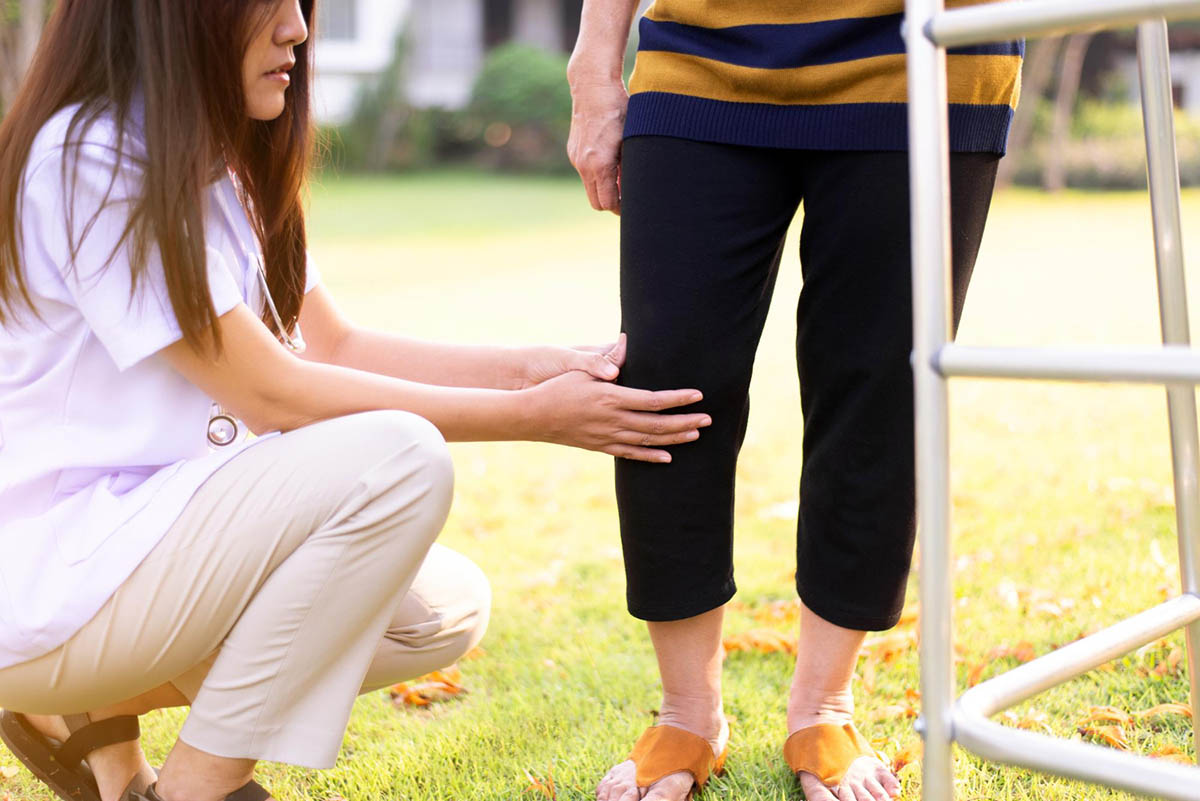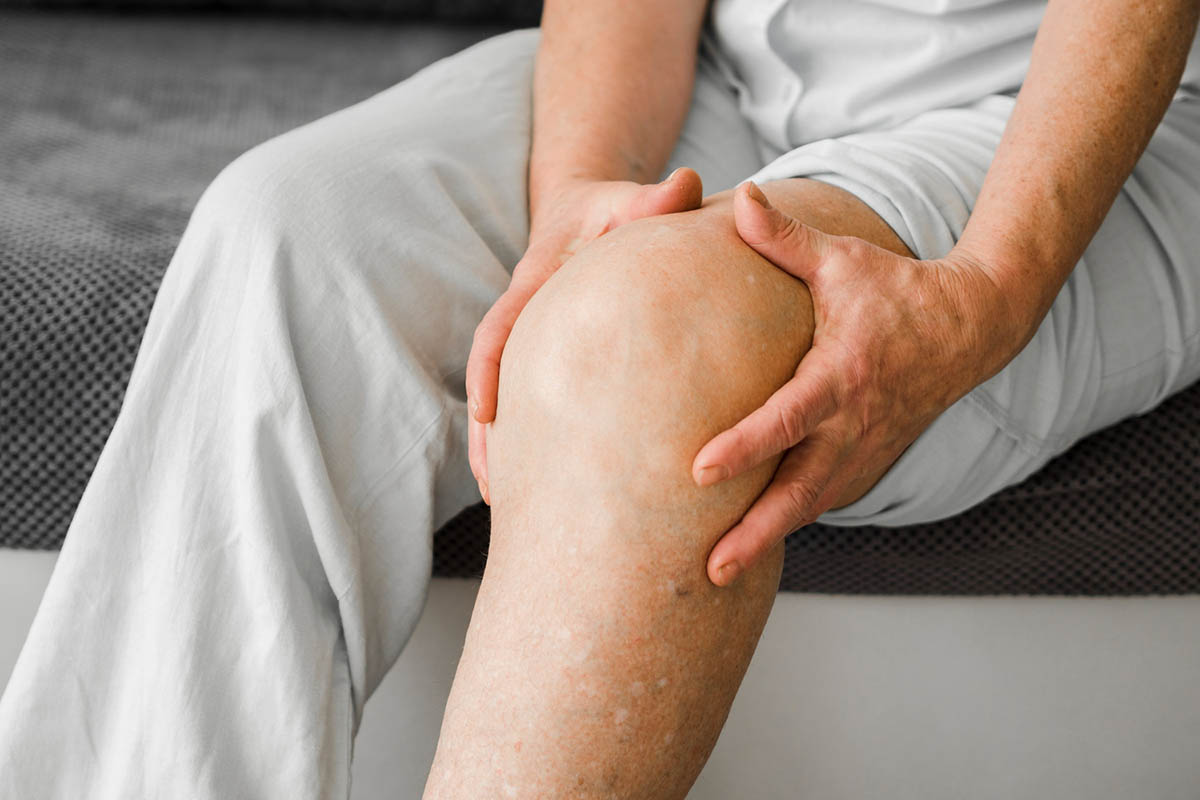Sciatica is a common ailment affecting people worldwide, disrupting daily activities and diminishing the quality of life. The prevalence of this condition varies, with the highest incidence around 40% for individuals in their 40s and 50s. While many might associate lower back pain solely with discomfort in the lumbar region, its effects can often extend to other parts of the body, such as the knees. This raises the question: can sciatica cause knee pain? In this blog, we will explore this question and discuss how physical therapy exercises play a crucial role in managing and alleviating this pain, providing significant relief, and improving overall mobility.
What is Sciatica?
Sciatica refers to pain that radiates along the path of the sciatic nerve, which extends from your lower back through your hips and buttocks and down each leg. Typically, sciatica affects only one side of your body. It occurs when the sciatic nerve is compressed, usually by a herniated disk, a positional fault of the pelvic and lumbar spine bones/joints, or a repeated strain due to an inefficient movement pattern of the trunk/lower extremity interconnectedness. The lifetime incidence of sciatica is reported to be between 10% and 40%.
Common Causes and Risk Factors
Sciatica can be triggered by various factors, including any of the following:
- Herniated Discs: When the soft material inside the spinal disc pushes out, it can compress the nerve roots, causing sciatic nerve pain.
- Positional Faults: This occurs from a direct trauma, such as a fall on the bottom or directly on the front of the knee, stepping in off of a curb, or repeated inefficient movements which can result in a shift of one aspect of the joint.
- Repeated Microtraumas: Poor posture and poor neuromuscular control (inefficiency) can gradually stress all neural tissues (disc, nerve root, or peripheral nerves – including the sciatic nerve itself).
- Pregnancy: The added weight, direct compression of nerve roots or peripheral nerves in the pelvic floor, and changes in posture can lead to sciatica.
- Poor Posture: Sitting, standing, just moving without good control of the body, or exercising improperly can put stress on the spine.
- Sedentary Lifestyle: Lack of physical activity can weaken the muscles controlling posture and movement exposes the nerve roots which form the sciatic nerve.
Symptoms
The hallmark symptom of sciatica is multiple types of pain radiating from the lower back through the buttock and down the back of one leg (sharp, burning, pressure, piercing, etc.). Additional symptoms can include altered sensation, hyperactive muscle tone, numbness, tingling, or muscle weakness along the nerve pathway. These Sciatica symptoms can range from mild to severe pain and may worsen with prolonged sitting, sneezing, coughing, or repeated stresses to the nerve itself – compression or tension.
How Sciatica Can Lead to Knee Pain
The sciatic nerve is the longest nerve in the body and can affect areas far from its origin. When it is compressed or irritated, the pain can travel along its length, potentially reaching all the way to the tip of the toes (various branches and different names of these branches – all from the same sciatic nerve origin). This raises the question: can sciatica cause knee pain? The short answer is yes. The nerves that branch out from the sciatic nerve provide sensation and control to the knees, so the knee joint can become a site of referred pain, making it seem like the knee is the primary problem when it’s actually the lower back or anywhere along the neural pathway.
Common Knee Symptoms You May Experience with Sciatica

If you are experiencing knee pain simultaneously with your sciatica symptoms, you’re not alone. Many individuals suffering from sciatica report discomfort or pain in the knee area, which can be perplexing given that the pain appears to originate from wherever the sciatic nerve originates, or supplies. Understanding the interconnectedness of the nervous system and how sciatica can manifest as knee discomfort is essential for effective diagnosis and treatment. In this section, we’ll explore the common knee symptoms associated with sciatica and how they may differ from primary knee injuries or conditions.
Sharp Pain
A sudden, intense pain in the knee can occur due to sciatica. This pain often feels like an electric shock or stabbing sensation and can significantly impair movement.
Dull Ache
A persistent, throbbing pain in the knee is another common symptom. This ache can interfere with sleep and everyday activities, making it difficult to focus on daily tasks.
Warm Sensation
A feeling of warmth/heat in the knee might be experienced, which can be mistaken for an inflammatory condition. This warmth/heat is a result of reduced oxygen to the sciatic nerve and nerve irritation.
Weakness when Extending the Knee
Sciatica can cause muscle weakness, making it difficult to straighten the knee fully. This weakness can lead to poor control and a lack of confidence in the leg’s strength and reliability when needed.
Inability to Bear Weight on the Knee
Severe sciatica can make it challenging to put any weight on the affected leg, causing significant mobility issues. This symptom can severely limit physical activity and increase the risk of loss of balance.
Knee Buckling or Giving Out
The knee may suddenly give way, leading to stumbling and increased risk of injury. This buckling is often due to the nerve’s reduced signal strength to engage the muscles of the entire lower extremity, maybe only felt at the knee joint. The signal strength is directly related to the strength and power generation of the muscle(s) supplied by that branch.
How to Identify if Knee Pain is Related to Sciatica
Identifying if knee pain is related to sciatica involves understanding the pattern of your symptoms. If the pain in your knee is accompanied by a sense of discomfort at areas above and below the knee, muscle weakness, increased symptoms if the leg has been stretched, numbness, or tingling, it is likely related to sciatica. A thorough medical examination, a complete history and assessment of all reported ‘behavior’ of the pain, including neural tension tests performed by a Fellowship-trained Orthopedic Manual Physical Therapist is the best way to start. If there are other more serious signs, significant muscle atrophy, a loss of reflexes, or loss of bowel or bladder control, then more telling diagnostics should be performed by a physician is warranted. The use of imaging tests like MRI or CT scans, can confirm a more serious diagnosis. The presence of pain only does not necessarily require these more expensive and extensive tests and is often not the first course of action from many doctors. Even discs can heal without surgical intervention or injections. Button line: getting an accurate diagnosis is essential to address the root cause of the pain effectively.
Treatment Options for Sciatica-Related Knee Pain
When dealing with sciatica-related knee pain, it’s essential to explore various treatment options to find relief and restore function. For the larger portion of those with sciatic nerve pain, physical therapy and possibly medication is the best way to approach these conditions. In severe cases, those resulting in loss of major bodily control (pelvic floor, severe atrophy and loss of reflexes) then surgical interventions may be the best course to take. These approaches aim to address both the symptoms and underlying causes of the pain.
Nonsteroidal Anti-Inflammatory Drugs (NSAIDs)
NSAIDs can help reduce inflammation and relieve pain. Common options include ibuprofen and naproxen. These over-the-counter pain relievers can be an effective first line of treatment for sciatica knee pain.
Physical Therapy
Physical therapy examination and diagnosis is the most effective first course of action. Proper diagnosis, plan of care established, manual therapy techniques, physical therapy exercises can provide those with sciatic nerve knee pain the best remedy. A Fellowship-trained Orthopedic Manual Physical Therapist can design this specific exercise program tailored to your individual needs, focusing on improving your symptoms, correcting any dysfunctions, and offering a way to prevent this from recurring gives people the most holistic and complete management of the entire episode.
Surgery in Severe Cases
When conservative treatments are not appropriate, individuals should be referred out to an appropriate surgeon for consultation. Surgical procedures such as microdiscectomy or laminectomy can be effective in relieving severe sciatic compromise.
Tips to Prevent Sciatica and Knee Pain
Preventing sciatica and knee pain involves proactive measures to maintain spine health and overall well-being. By incorporating these tips, you can significantly reduce the risk of developing these painful conditions and enhance your quality of life.
- Maintain Good Posture: Proper posture reduces strain on the spine and can prevent sciatica.
- Exercise Regularly: Regular physical activity strengthens the muscles supporting the spine and improves overall neuromuscular control of the trunk and areas affecting the sciatic nerve.
- Lift Heavy Objects Properly: Use proper form – using appropriate torso position, hip position, and balance of lower extremities to lift any object, including heavy items to avoid spinal and nerve injuries.
- Avoid Prolonged Sitting: Take breaks to stand and stretch to prevent pressure on the sciatic nerve, as well as engaging the trunk stabilizer muscles to control the pelvis and hips.
- Maintain a Healthy Weight: Excess weight can put additional strain on your spine and contribute to sciatica and knee pain.
When to Seek Medical Help

Seek medical help if your knee pain is severe, persistent, or accompanied by symptoms such as numbness, tingling, or muscle weakness. Early intervention can prevent the progression of sciatica and reduce the risk of long-term complications. A healthcare provider can offer medical advice and recommend appropriate treatment options based on your specific condition.
At Austin Manual Therapy Associates, we specialize in providing expert Fellowship=trained Orthopedic Manual Physical Therapy tailored to alleviate a wide range of conditions, including sciatica. Our experienced team is dedicated to helping you achieve lasting relief for sciatica pain through personalized treatment plans that address the root causes of your discomfort. By combining the most appropriate and specific manual therapy techniques with targeted exercises, we aim to restore your symptom-free mobility and improve your quality of life, ensuring that you can return to all of your daily activities pain-free. Discover how our comprehensive approach is different from other clinics and medical professionals, and can help you manage and overcome sciatica-knee pain effectively.
Conclusion
Does sciatica cause knee pain? Indeed, it can, which in turn will affect your daily activities and overall quality of life. Understanding the link between sciatica and knee pain is crucial for effective management and treatment. With the right approach, including physical therapy assessment and an appropriate plan of care, individualized Fellowship-trained Orthopedic Manual Physical Therapy manipulative techniques, targeted and individualized therapeutic exercise just for you, and restoring efficient lifestyle adjustments, relief is always possible. Always consult with a healthcare professional for a proper diagnosis and personalized treatment plan.
FAQs
How do you fix sciatic knee pain?
Sciatic knee pain can be managed through a combination of physical therapy, NSAIDs, and as the last resort, in some more severe life-altering cases, surgery. Exercises that strengthen the back and core muscles can also help alleviate pressure on the sciatic nerve. Regular exercise and maintaining proper posture are crucial for long-term relief from sciatica-related pain.
What helps knee pain from sciatica?
Fellowship-trained Orthopedic Manual Physical Therapy evaluation, assessment, and prognosis is the best start. Physical therapy exercises, NSAIDs, and maintaining good posture can help relieve knee pain caused by sciatica, and can also be beneficial in managing pain levels and improving nerve function.
How long does sciatica of the knee last?
The duration of sciatic knee pain varies depending on the cause and treatment approach. With appropriate treatment, many individuals experience significant improvement within a few weeks, although some cases (if it has been present for a much longer time) it may take longer to resolve. Chronic pain may require a comprehensive approach, including more consistent long-term Fellowship-trained Orthopedic Manual Physical Therapy may be needed, as well as lifestyle changes and ongoing medical treatment.





